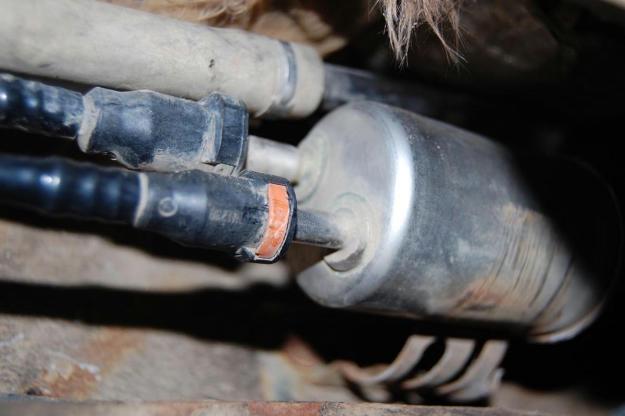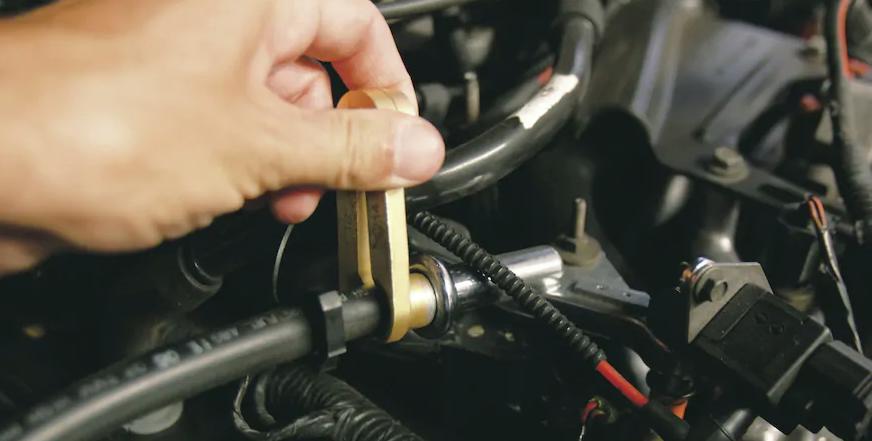
*** Caution: Risk of fire. Keep cigarettes, sparks, open flame, and other sources of ignition away from vehicle. Gasoline, methanol, and oxygenated fuels are toxic and flammable and must be handled appropriately.
Having trouble figuring out how to disconnect your Ford fuel lines? You may need one of these disconnect tools:
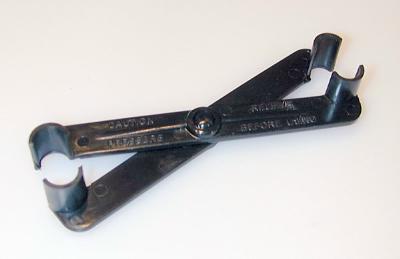
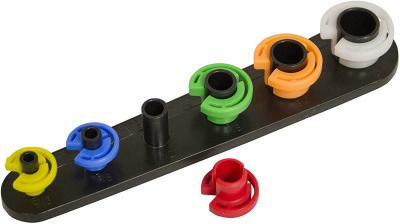
Duck Bill Clip or Steel Push Connect Fitting:
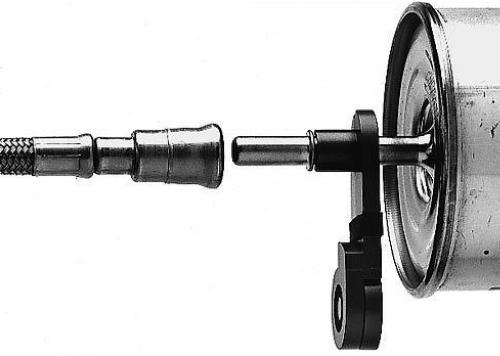
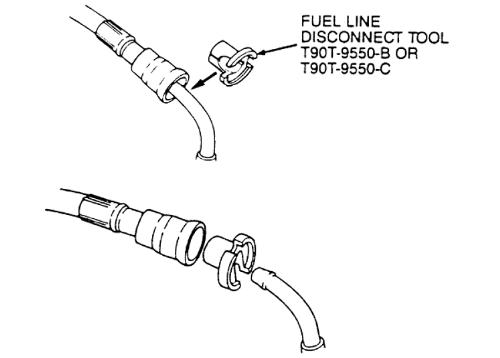
1) A special tool is available from Ford and other manufacturers for removing the retaining clips. Use Ford Tool T90T-9550-B or C or equivalent. If the tool is not on hand, go onto step 2. Align the slot on the push connector disconnect tool with either tab on the retaining clip. Pull the line from the connector.
2) If the special clip tool is not available, use a pair of narrow 6-inch slip-jaw pliers with a jaw width of 0.2 in (5mm) or less. Align the jaws of the pliers with the openings of the fitting case and compress the part of the retaining clip that engages the case. Compressing the retaining clip will release the fitting, which may be pulled from the connector. Both sides of the clip must be compressed at the same time to disengage.
3) Inspect the retaining clip, fitting end and connector. Replace the clip if any damage is apparent.
4) Push the line into the steel connector until a click is heard, indicating the clip is in place. Pull on the line to check engagement.
Hair Pin Clip:
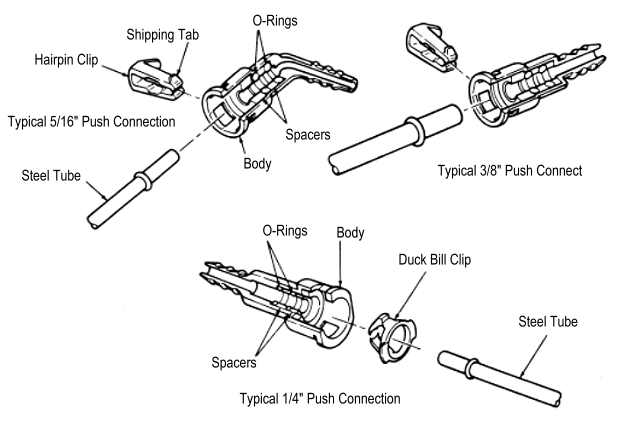
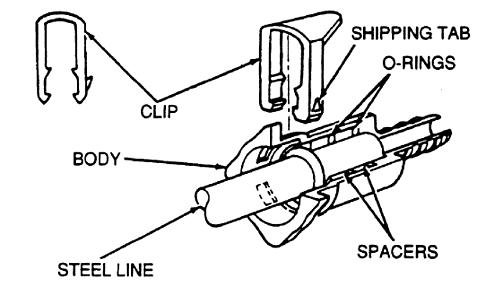
1) Clean all dirt and grease from the fitting. Spread the two clip legs about 1/8 in. (3mm) each to disengage from the fitting and pull the clip outward from the fitting. Use finger pressure only; do not use any tools.
2) Grasp the fitting and hose assembly and pull away from the steel line. Twist the fitting and hose assembly slightly while pulling, if the assembly sticks.
3) Inspect the hairpin clip for damage, replacing the clip if necessary. Reinstall the clip in position on the fitting.
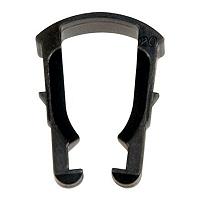
4) Inspect the fitting and inside of the connector to ensure freedom from dirt or obstruction. Install the fitting into the connector and push together. A click will be heard when the hairpin snaps into the proper connection. Pull on the line to insure full engagement.
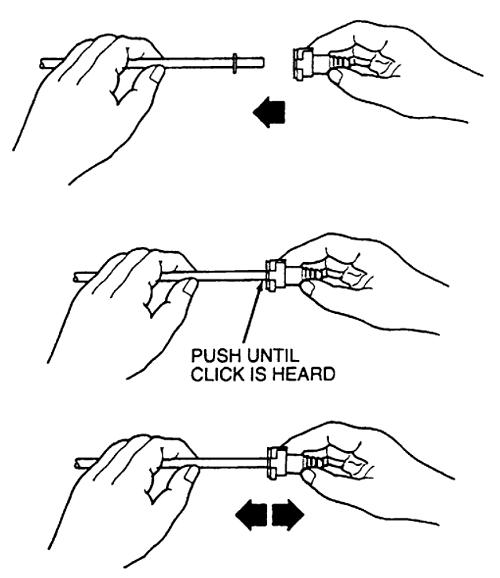
If the clips look like the orange one in the photo above, you need to push the clip inward and pull back on the line to release it.
Spring Lock Coupling:
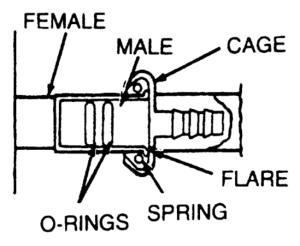
The spring lock coupling is held together by a garter spring inside a circular cage. When the coupling is connected together, the flared end of the female fitting slips behind the garter spring inside the cage of the male fitting. The garter spring and cage then prevent the flared end of the female fitting from pulling out of the cage. As an additional locking feature, most vehicles have a horseshoe-shaped retaining clip that improves the retaining reliability of the spring lock coupling.
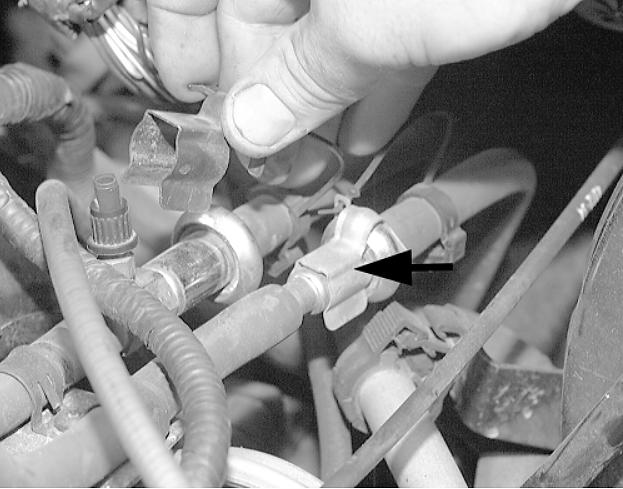
Remove the safety clip from the fuel lines, the clip is attached to a small wire that keeps it from getting lost.
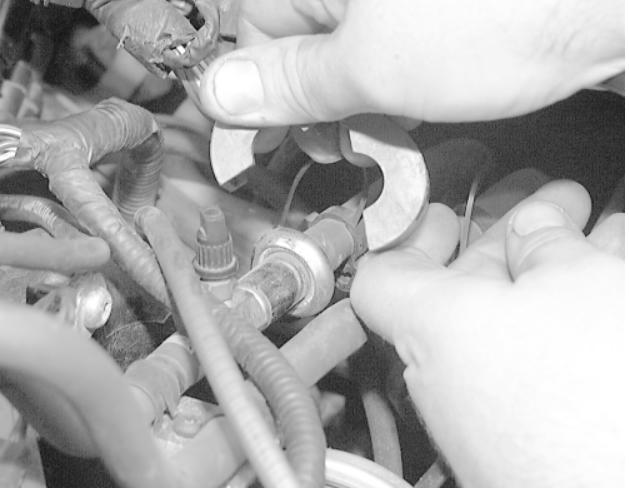
This type of removal tool has a hinged center section that allows you to fit it around the fuel line.
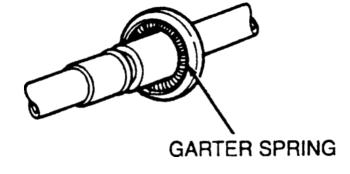
The garter spring is located inside the fitting and holds the fitting together.
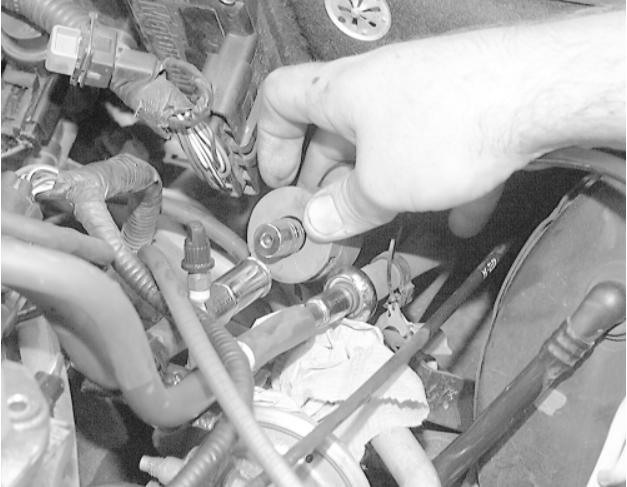
Slide the tool back to unseat the garter spring on the fitting, and pull back on the fuel line to separate them.
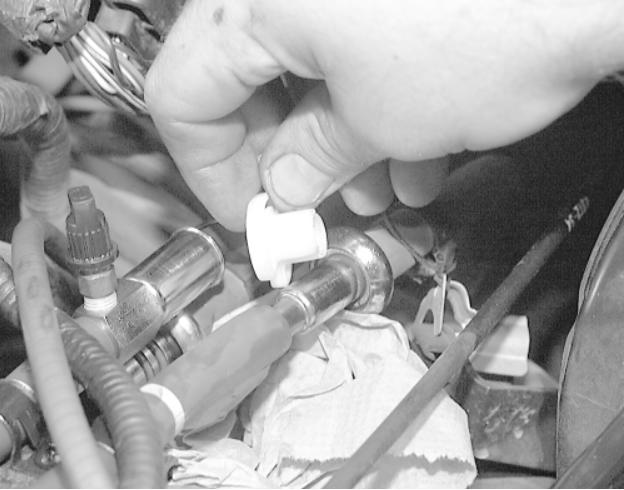
This type of removal tool snaps over the line.
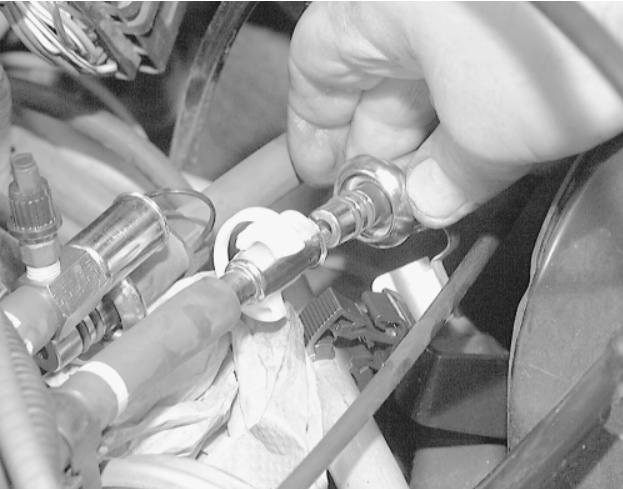
Slide the tool back to unseat the garter spring on the fitting, and pull back on the fuel line to separate them.
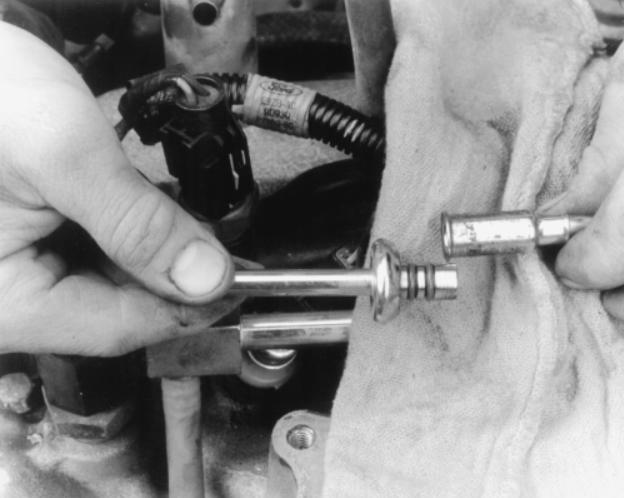
Be sure to check the O-rings for damage; replace them if necessary.
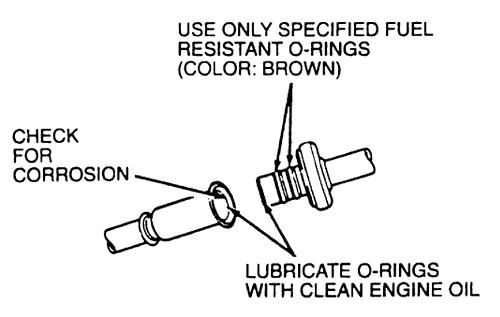
The O-rings should be replaced if necessary with the specific ones used for the fuel system, a non-specific O-ring could leak.
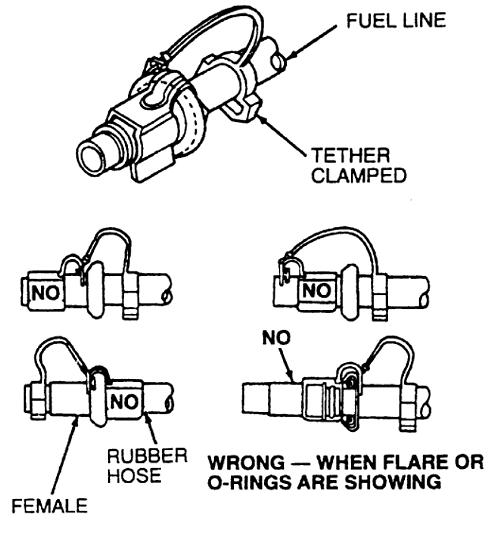
The fitting should be inspected after assembly.

